Types of cams for turning cartridges
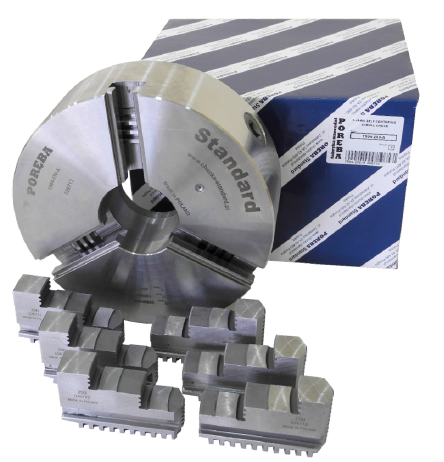 The lathe chuck is the main element of the lathe tooling, a clamping device that ensures the fixation of workpieces on the spindle. The use of cartridges allows processing at high speeds of rotation, ensures the accuracy of installation and the necessary clamping force. Any turning chuck has several cams in its design, which are special clamps for holding and centering the workpiece. They can be 2, 3, 4 or 6 pieces, depending on the design and size of the cartridge. The cams are made of alloyed high-strength steels and are designed for centering and fixing the workpiece in the working area.
The lathe chuck is the main element of the lathe tooling, a clamping device that ensures the fixation of workpieces on the spindle. The use of cartridges allows processing at high speeds of rotation, ensures the accuracy of installation and the necessary clamping force. Any turning chuck has several cams in its design, which are special clamps for holding and centering the workpiece. They can be 2, 3, 4 or 6 pieces, depending on the design and size of the cartridge. The cams are made of alloyed high-strength steels and are designed for centering and fixing the workpiece in the working area.
Cams are of the following types:
- straight lines;
- inverse;
- soft or "raw cams";
- national teams.
Straight cams
For clamping parts, straight cams are most often used. Each of them has two stages for fixing parts in a "decompression" way and one prism working "for compression".
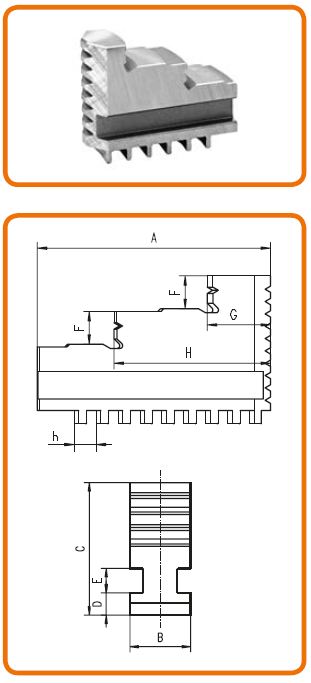
The working platforms of the cam steps, against which the ends of the machined parts rest, serve to eliminate the end runout of the latter.
Details are attached by means of straight cams:
- small-sized (by the surface of the prisms – for the outer side of the part);
- large–sized (as a rule, hollow blanks are the surface of the steps).
Reverse cams
Reverse cams by their design are the opposite of straight ones and are used for fixing the "compression" of the outside of parts of large diameters.
The outer surface of the return cams can be used for the device of an additional fastening base that works "to unclench" the inner surface of the workpiece.
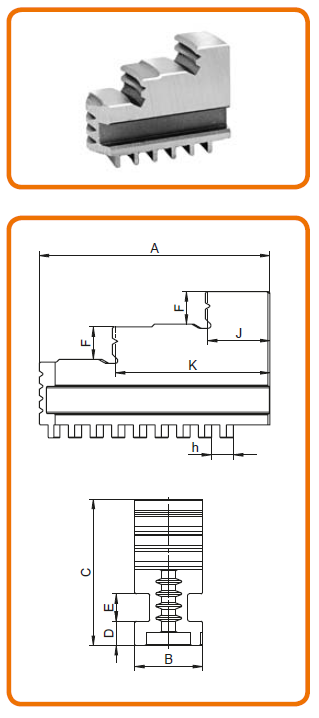
Soft cams
They are also called "raw cams". They serve as blanks for boring to the desired diameter of the part with subsequent heat treatment.
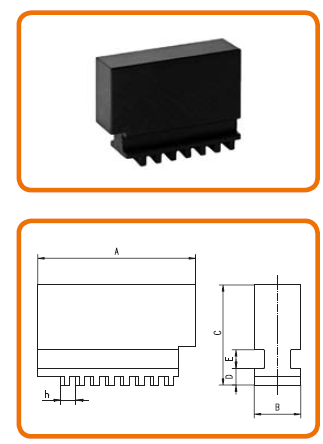
Prefabricated cams
Prefabricated cams (universal, composite) consist of two parts:
- lower – rail with combs (moves along a spiral disk);
-
the upper one is an overlay (with standard hardening of the working area).
The pads are reversible cams (forward - reverse).
To change the look, it is enough to unscrew two bolts on each "shifter", deploy it with the right side and fix it on the rail with the same bolts.
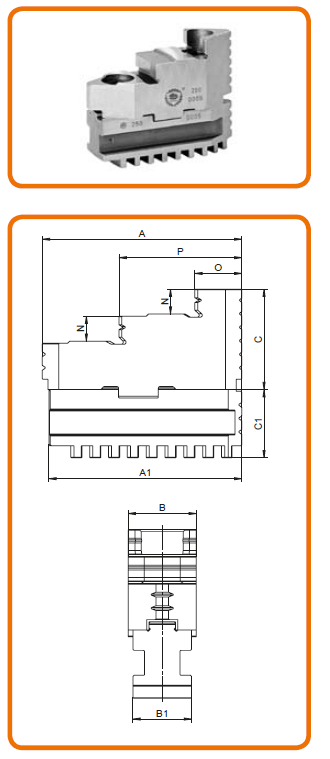
The versatility of the prefabricated cams makes it possible to reduce the preparatory processing time of the part, if necessary, frequent change of straight to reverse and vice versa. This type of cams causes an error due to the reinstallation of the "shifters" and for this reason are used in turning cartridges with a diameter of 250 mm or more. The magnitude of the relative error is not so significant here, but the labor costs for reinstalling are reduced significantly.
The main types of cams for turning cartridges were described above, thank you for reading this article, I hope it was useful for you.
Below is a video on boring cams during operation:
Sources:
1) Bison catalog 2018;
2) Poreba catalog;
3) https://vseostankah.com/tokarnyj-stanok-po-metallu/kulachki-dlya-tokarnogo-patrona.html;
4) https://mekkain.ru/library/patron-tokarnyij.html;
5) http://stavincom.ru/stanochnaya-osnastka/tokarnyj_patron/kulachki_tokarnyie
